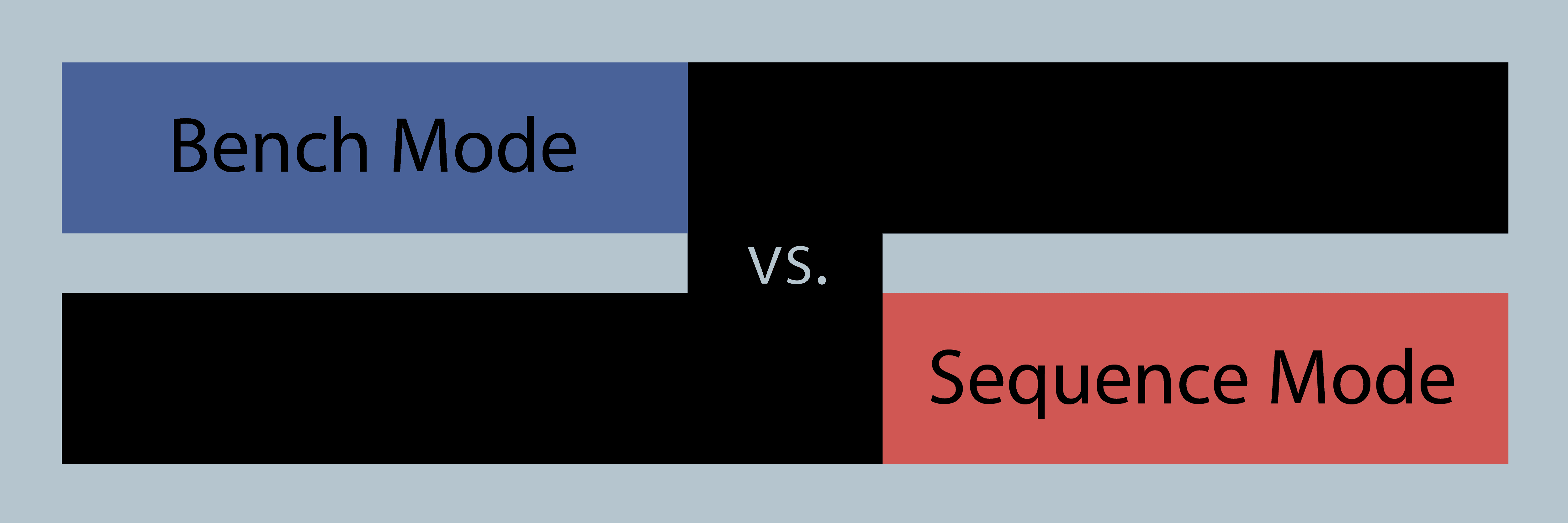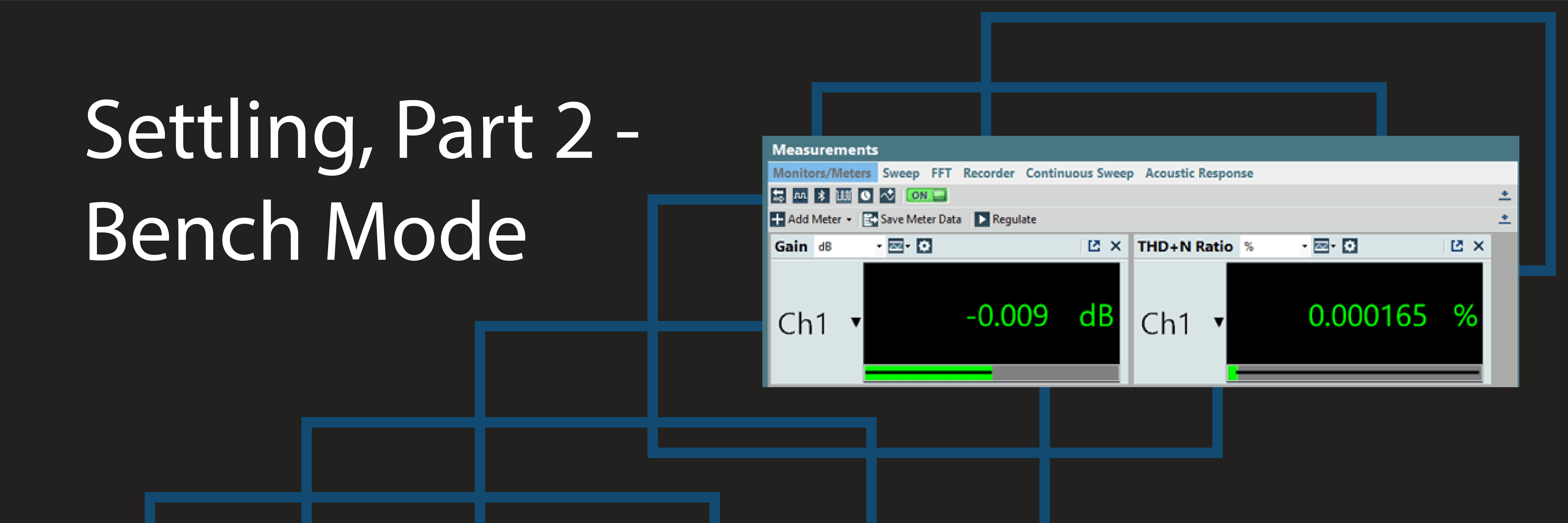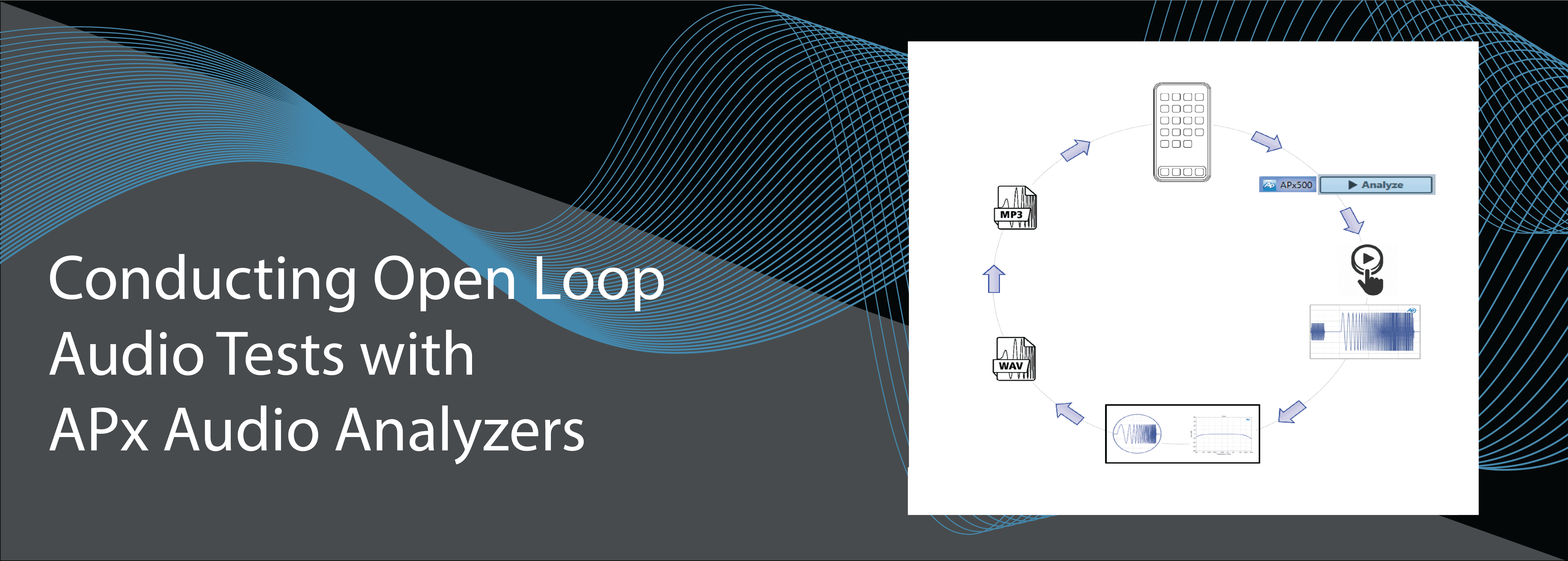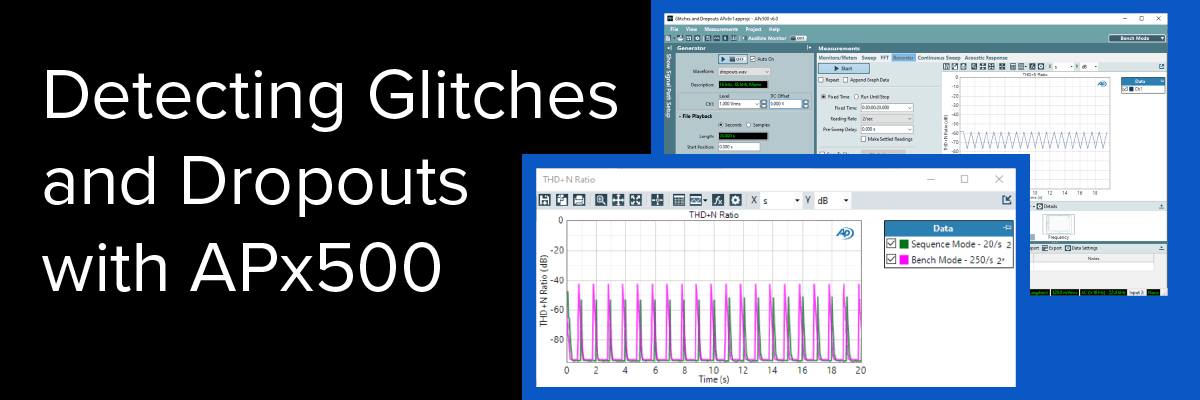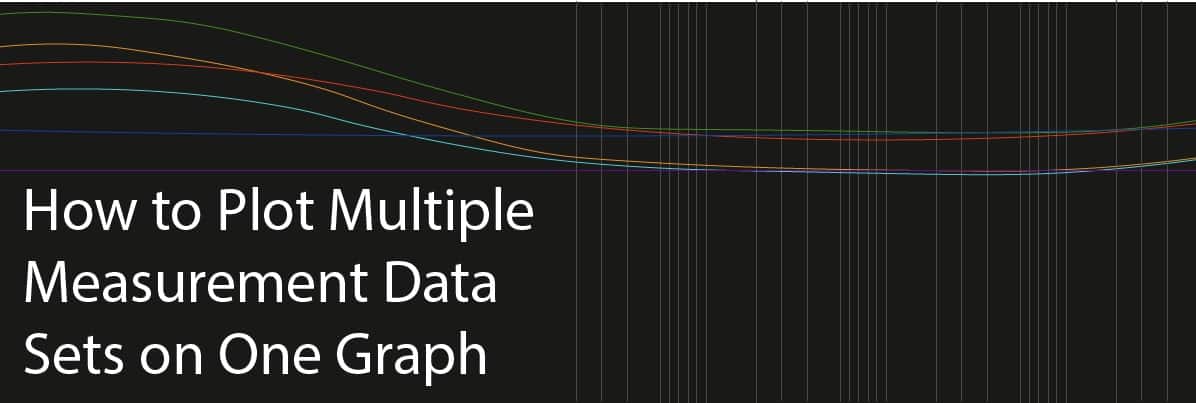Bench Mode vs. Sequence Mode
Comparing Interfaces: Sequence Mode and Bench Mode in APx500
Sequence Mode
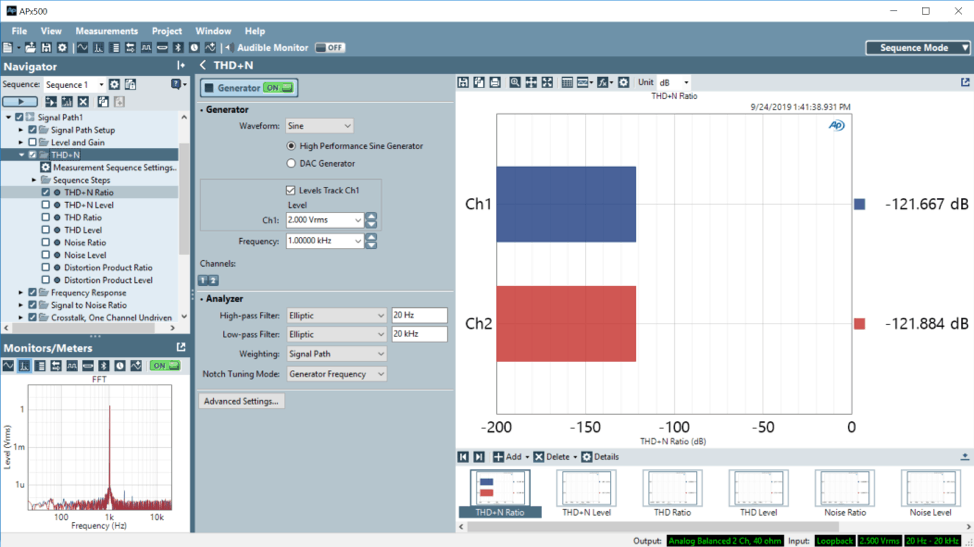
Bench Mode
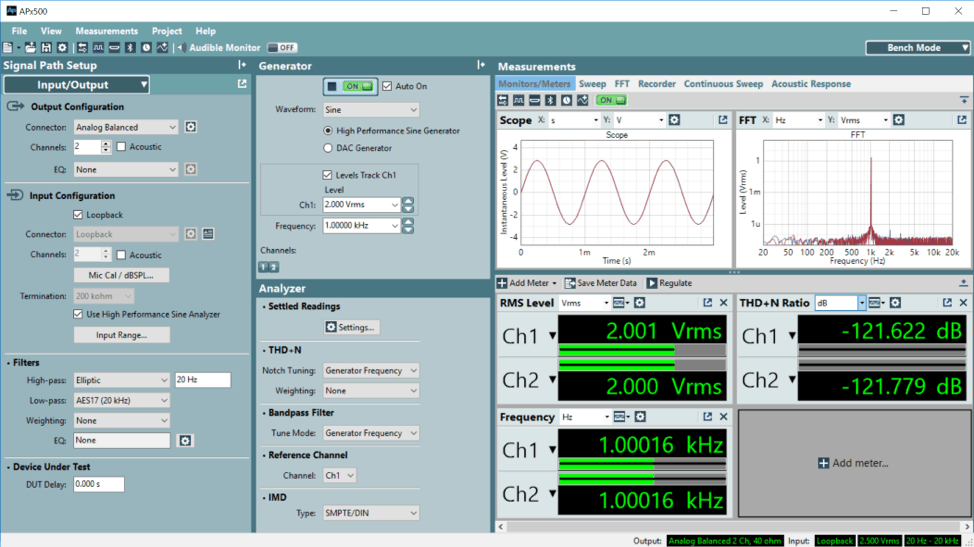
These two modes of operating the APx500 software represent not just two different approaches to how the software is used, but also two different signal processing approaches. Sequence Mode was the original user interface paradigm for the system. We developed it with the goal of making the software easy to use and easy to automate by providing a built-in measurement sequencer and report generator.
We added Bench Mode later. The goal of Bench Mode is to support power users accustomed to having complete control of the measurement hardware, who just want to start the software and immediately get to work. (Little known fact: before we settled on the name “Bench Mode” we initially referred to this as “immediate mode.”) While Bench Mode and Sequence Mode are basically equivalent in terms of measurement functionality, in some cases people have noted subtle differences in measurement results (for example, the THD+N results displayed above are for the same device measured in both Sequence Mode and Bench Mode). Why is that?
Bench Mode and Sequence Mode fundamentally process audio samples differently. In Sequence Mode most audio measurements are the result of frequency domain processing. That is, audio data is acquired, a Fourier transform is applied, and then results are extracted by summing and dividing FFT bins as appropriate. In Bench Mode the audio measurements are generally the result of time domain algorithms. That is, calculations are carried out on the raw instantaneous audio samples coming from the analog to digital converters in our analyzers.
For example, in Sequence Mode RMS level is calculated by acquiring audio samples and converting them to the frequency domain representation via a Fourier transform. Bins are then selected according to the measurement passband and then an RSS (square-root-of-the-sum-of-squares) summation is performed in order to arrive at the final RMS level result. In Bench Mode, by contrast, RMS level is calculated by simply making Root-Mean-Square calculations directly on the audio samples. Filters in Bench Mode are similarly implemented in the time-domain by calculations directly on the stream of audio samples.
First, to be clear, the above is not universally true in either mode. In Sequence Mode many filters are implemented in the time domain and some measurements such as Quasi Peak Noise can only be returned via time domain-based signal processing. Likewise, in Bench Mode the signal spectrum is provided by a Fourier transform of the time domain signal into the frequency domain.
However, this fundamental difference in underlying signal processing can result in situations where a measurement result might be slightly different depending on whether the measurement is made in Bench Mode or Sequence Mode. Neither result is necessarily right or wrong, but rather it exposes subtle differences in the underlying signal processing.
